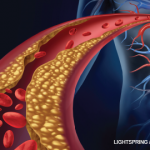
These are tough times for everyone in healthcare in the U.S. Due to skyrocketing healthcare costs, insurers are clamping down on access to studies and treatments that could improve outcomes. Pharmaceutical companies have higher hurdles to clear in order to get drugs approved, and those drugs that are approved are watched with increasing scrutiny by the government, public, and litigators. In this environment, pharmaceutical companies could reach for low-hanging fruit by repackaging already-available medications that have gone generic, slightly tweaking them (e.g., packaging them as a powder to speed their absorption, or creating an extended release pill or a slightly different dose), and then garnering Food and Drug Administration approval for what may be an unnecessary new version of an old drug. This process may yield a number of adverse consequences. This strategy might lead drug companies to siphon money away from research and development toward aggressively promoting “generics-plus.” Furthermore, because these tweaked compounds would cost quite a bit more than their already available generic counterparts, the amount of money spent on such drugs would ultimately detract from the system in a way that would affect patients, insurers, and physicians. After all, we are all reaching into the same kitty, and why should we pay more for green M&Ms when there are plenty of brown ones to go around?
In rheumatology, examples abound, and muscle relaxants seem to be a ripe target for adding tweaked versions of old medicines. After Flexeril went off patent (and cyclobenzaprine was less than $15 a month if taken once nightly), two other brand-name versions of cyclobenzaprine popped up, in the form of Amrix (extended release, $135/month) and Fexmid (a 7.5mg pill, offering a middle path between the already available 5mg and 10mg formulations). Once Soma 350mg tabs went off patent, a drug representative appeared touting the benefits of brand-name 250mg tabs over generic 350 mg carisoprodol. I told him that I wish I had known about the shortcomings of the 350 mg dose all those years, and that, with my newfound wisdom, I will wait until the 250 mg tab goes off patent and an even smaller dose becomes available.
No fewer than three products arose to fill a gap that apparently no one had noted until Ultram went off patent and generic tramadol became available. Two companies determined that extended-release tramadol would provide an unmet need, and are thus selling Ryzolt and Ultram ER, whereas the makers of Rybix ODT reached the opposite conclusion and produced a product that melts in your mouth, not in your gut.
While these products offer little, if any, benefit to patients beyond that of the existing products, insurers will pay significantly more for them despite cheaper alternatives, and ultimately, we physicians may have our pay (and our patients’ care) squeezed so that this practice can go on …
Even nonsteroidal antiinflammatory drugs (NSAIDs) are not immune from this phenomenon. Naproxen can be written for simply as naproxen, or as Anaprox, or Naprosyn, or Naprelan, or, in combination with Nexium, as Vimovo. The creators of this last drug addressed the burden imposed by taking a generic proton pump inhibitor and NSAID separately, rather than together in one expensive pill. Horizon Pharmaceuticals came to the same realization and will soon be releasing Duexis, a combination of ibuprofen and famotidine. Diclofenac, one of the more toxic NSAIDs, is repackaged at an even more impressive rate: in addition to the older Voltaren, Voltaren XR, Cataflam, and Arthrotec, there is now also Cambia, and Zipsor, and three topicals, the Flector patch, Pennsaid, and Voltaren gel. This is particularly terrible news to the Oriental white-backed vulture. (The severe and rapid decline in the populations of these birds—a more than 95% reduction since 1990—has been linked to diclofenac residues in their environment.1)


